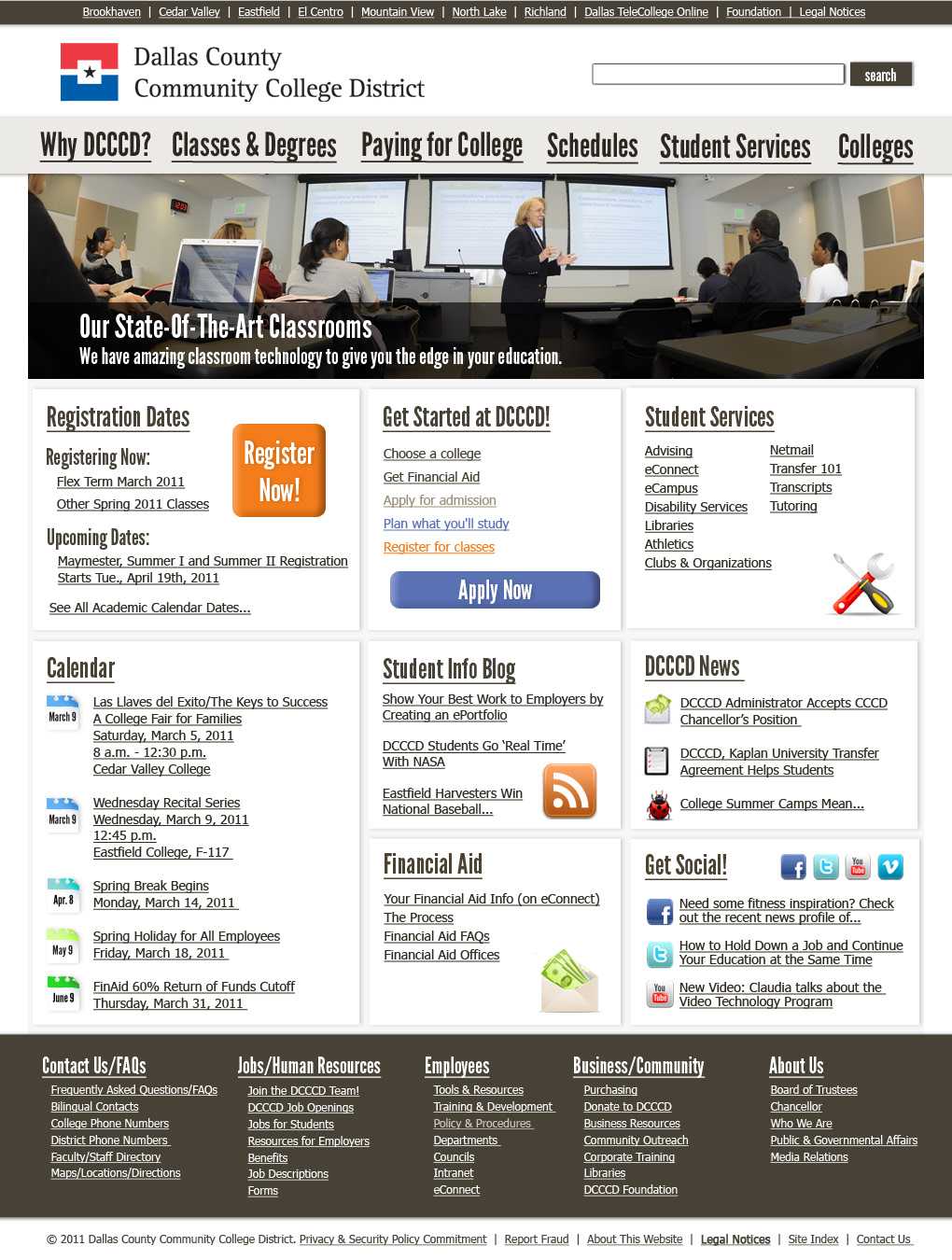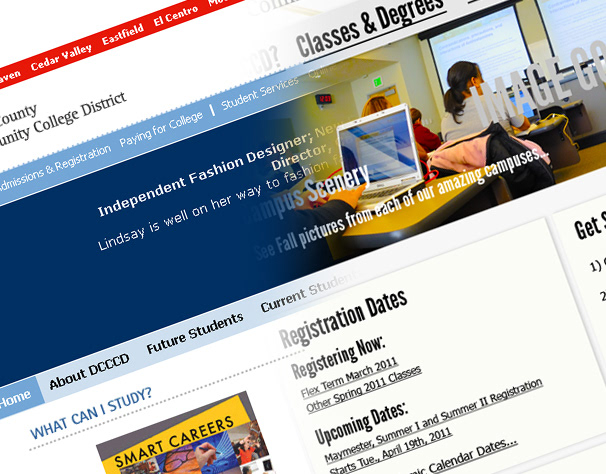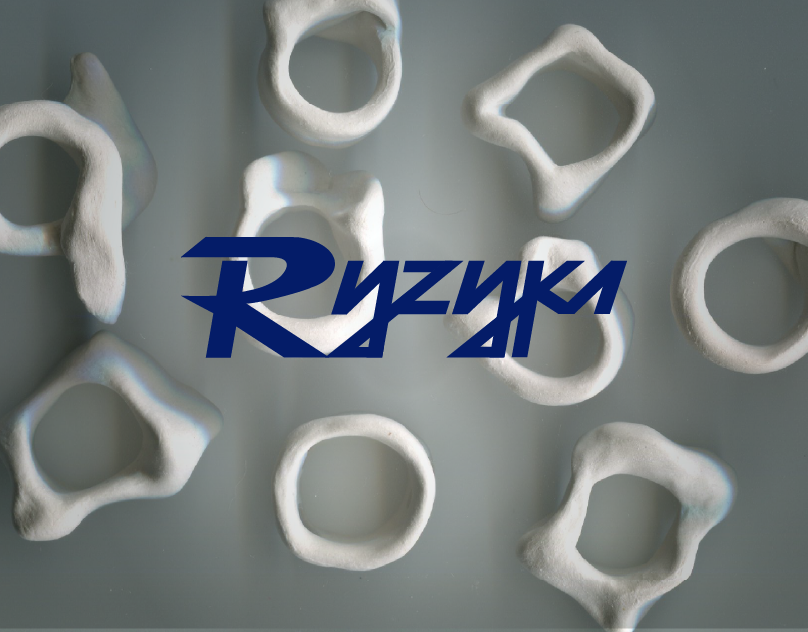DCCCD.edu Redesign
The Remaking of a Higher Ed Website
The Remaking of a Higher Ed Website
If all goes according to plan, you’ll soon see a new-look district website. The Internet Publishing Team is redesigning the district website with a fresher look, but the redesign isn’t aimed at just fancying up the look of the site. It has one main goal: To help DCCCD’s primary audience – students – find what they need faster.


The "mega bar" style of navigation expands our navigation area and allows us to categorize links for ease of navigation. The mega bar was also chosen to fit into the Sharepoint environment without looking "Sharepoint-y"
The Internet Publishing Team redesign is led by Senior Rich Media Developer/Producer Colleen Lin.
Lin notes that students’ expectations for the Web have changed since the present design was launched in late 2004.
Lin notes that students’ expectations for the Web have changed since the present design was launched in late 2004.
“Back then, websites were utilitarian, with no video, social network feeds, blogs, etc . What you can do on the Web has changed significantly.
“People don’t go to a website like ours for entertainment, necessarily. They come to a site like ours for information. We want students to be able to find information they want more quickly.”

DCCCD.edu design from late 2004 to the present. The site has undergone several minor graphic alterations since 2006, but the design has remained largely unchanged.
The present district site has navigation that is primarily “audience-based.” That means visitors might find information they need on the site based on what category they think fits them: current student, future (potential) student, continuing education student, business, etc.
“Most research shows that people don’t like to choose a category — for prospective students, choosing ‘future’ already feels like a commitment. We don't want to scare them off,” says Lin.
Instead of audience-based, the redesigned site will be more “task-based.” Visitors will navigate the website based on the task they intend to complete, such as finding an address or other contact information, or selecting a program. The goal: enabling visitors to find what they need more easily and with fewer clicks.
Lin’s preliminary design follows extensive research and is a model of what that research has shown works best on college websites.
A strong influence is a report titled “College Students on the Web/Usability Guidelines for Creating Compelling Websites for College Students.” The authors of the report, Nielsen Norman Group, a respected organization specializing in usability on the Web, researched how students use college websites at 12 colleges or universities in four countries with usability tests and ethnographic observation of 217 websites.
Their research refutes certain “myths” about students’ use of the Internet:

The design is evolving. Final decisions on, and changes to, the redesign will be based on student feedback, research and usability guidelines, and stakeholder input. The Internet Publishing Team will be at several of the DCCCD colleges this Spring semester to test its assumptions about how students will navigate the site. The team will test whether students can navigate the site easily, and how the design can be improved. Findings from student usability testing will play perhaps the largest role in the final design.
“Because a redesign happens so rarely, we want to make sure we get it right,” says Lin.





